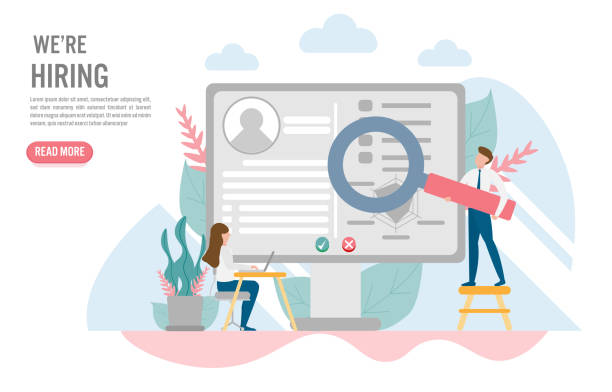Introduction to the Importance of Personal Website Design in the Digital Age
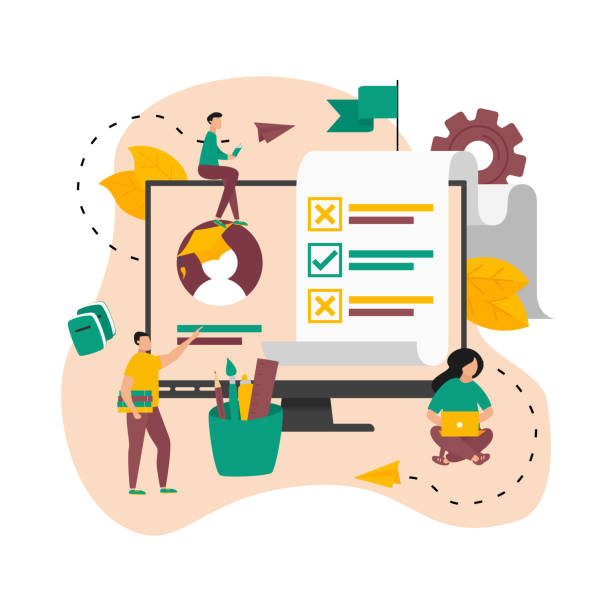
In today’s rapidly digitizing world, having a powerful online presence has become more important than ever.
One of the most effective ways to achieve this goal is through personal website design.
This platform not only allows you to showcase your #skills, #projects, and #thoughts in an organized manner, but also serves as an #online_hub for your networking and professional growth.
Why should you consider designing a personal website? First and foremost, a dedicated website gives you complete control over your content, unlike social media platforms that have their own rules and algorithms.
This freedom allows you to build your personal brand exactly as you want it.
In today’s competitive world, individuals with personal websites often appear more professional and trustworthy.
This is a powerful tool for entrepreneurs, freelancers, artists, writers, and anyone who wants to make their voice heard.
Furthermore, a personal website can act as a living portfolio, where you can update your works and show them to potential employers or clients.
This is a long-term investment in your professional future that will yield significant returns and set you apart from others.
Ultimately, designing a personal website is an important step to building online credibility and expanding your reach, helping you establish your position in the digital space.
It is a vital tool for anyone looking to grow and develop in their field.
Are you bothered by losing customers who visited your site to buy?
Rasaweb is your specialized solution for a successful online store.
✅ Significantly increase your online sales
✅ Build trust and professional branding with customers⚡ Get a free consultation from Rasaweb experts!
Initial Steps in Planning and Defining Your Personal Website Goals
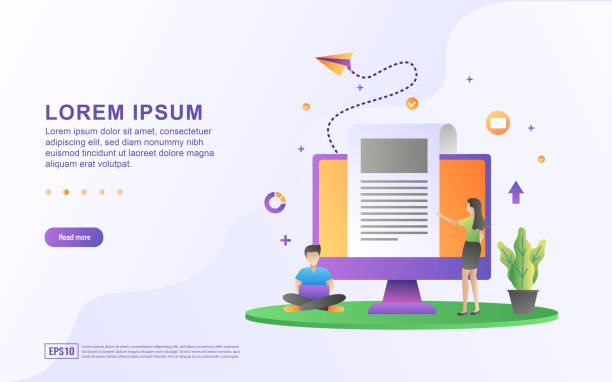
Before any practical action for personal website design, the planning stage is of paramount importance.
This stage includes defining your main goals for having a website and identifying your target audience.
First, ask yourself: “Why do I need this website?” Is your goal merely to showcase a portfolio, or do you intend to launch a blog to share your specialized knowledge? Perhaps you want to create a platform to sell your products or services.
The answers to these questions will determine the overall direction of your site’s design and content.
For example, if your goal is to attract employers in a specific field, your website should be designed to be completely specialized and professional and include relevant portfolios.
Next, define your target audience.
Are they students, professionals in a specific field, or the general public? Understanding your audience helps you determine the tone, style, and even the type of content you should produce.
For example, if your audience is beginners, your content should be educational and simple, while for specialists, depth and more analysis are important.
This information helps you outline the site’s navigation, main pages, and even the keywords you need to optimize.
Ignoring this step can lead to a website that does not properly meet your goals and wastes your time and money.
Ultimately, careful planning will be a solid foundation for success in your personal website design and prevent future confusion.
Choosing the Right Platform and Hosting for Your Personal Website

One of the key decisions in the personal website design process is choosing the right platform (Content Management System or CMS) and hosting company.
There are various CMS options, each with its unique features and benefits.
WordPress is the most popular option due to its high flexibility, thousands of themes and plugins, and a large user community.
This platform is suitable for individuals with different levels of technical knowledge and supports everything from simple blogs to complex online stores.
Other options include Joomla, Drupal for larger projects, and Website Builders like Wix or Squarespace, which are ideal for beginners looking for quick, no-code solutions.
Alongside CMS selection, hosting is also of paramount importance.
Hosting refers to the location where your website files are stored and made accessible via the Internet.
Website loading speed, security, and stability largely depend on the quality of your hosting.
Types of hosting include Shared Hosting (which is cheaper), Dedicated Server, Virtual Private Server (VPS), and Cloud Hosting.
For personal website design in the initial stages, shared hosting is usually sufficient, but as the site grows, you may need to upgrade to more powerful options.
Always choose a hosting company that offers strong technical support, high uptime, and acceptable security.
This correct choice forms the foundation of your website’s success and prevents future problems.
Comparison of Popular Platforms for Personal Website Design
| Platform | Advantages | Disadvantages | Best For |
|---|---|---|---|
| WordPress | High flexibility, many plugins, large user community, SEO-friendly | Requires maintenance, complex for beginners, security issues if not updated | Blogs, portfolios, small business sites |
| Wix | Drag & Drop interface, easy for beginners, built-in hosting | Less flexibility, difficult site migration, SEO limitations in some cases | Simple personal sites, artists, small businesses without complex needs |
| Squarespace | Beautiful and professional templates, excellent support, built-in marketing tools | Higher price, more limited customization than WordPress | Photographers, artists, designers, businesses that prioritize visual aesthetics |
Visual Design and User Experience (UI/UX) in Personal Website
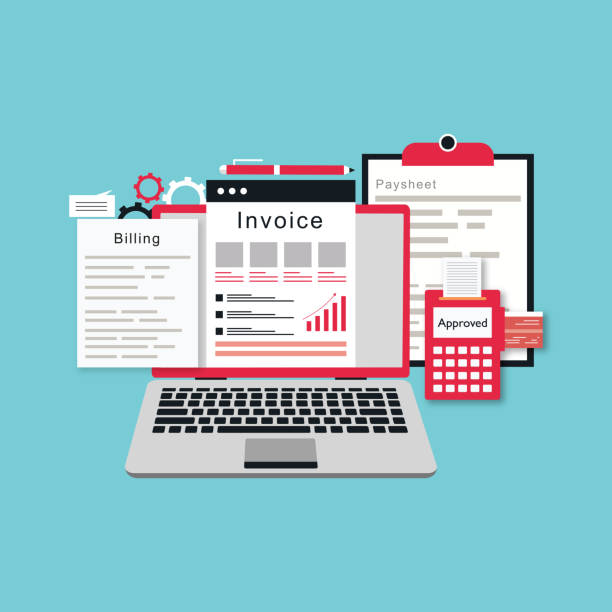
After choosing the platform and hosting, it’s time for the crucial stage of visual design and user experience (UI/UX) for your personal website design.
Visual design includes all the aesthetic elements of your site such as colors, fonts, images, and layout.
These elements should align with your visual identity and reinforce the message you want to convey.
Choosing the right color palette, using readable and consistent fonts, and employing high-quality images all play a role in creating an attractive and professional website.
The main goal is for your website not only to look good but also to convey a sense of trust and professionalism to the visitor.
Concurrent with visual design, user experience (UX) is also of paramount importance.
UX refers to how easily visitors can interact with your website and access the information they need.
A website with excellent UX should have easy navigation, fast loading times, and organized content.
Responsive Design, which ensures your website displays correctly on all types of devices (mobile, tablet, desktop), is now a necessity and no longer just an advantage.
This is crucial not only for user satisfaction but also for search engine rankings.
A successful personal website design should engage visitors and provide them with an enjoyable experience.
Can users easily find what they need? Are forms simple and fillable? Are processes smooth and unambiguous? These are questions that need to be answered during the UX design phase.
A user-centric personal website not only has visual appeal but also functions optimally in practice.
Are you tired of losing customers due to poor e-commerce website design? With Rasaweb, solve this problem permanently!
✅ Increase sales and conversion rate of visitors to customers
✅ Smooth and attractive user experience for your customers⚡ Get a free consultation!
Content: The Cornerstone of an Effective and Lasting Personal Website
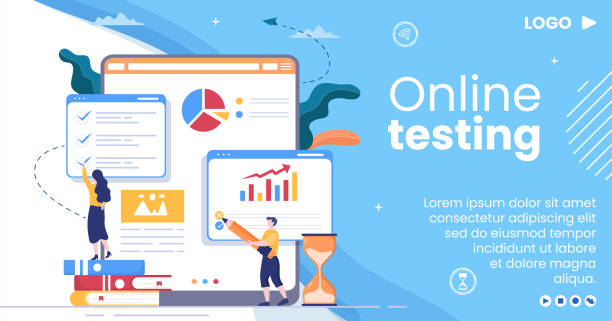
Content is the beating heart of any website, and this principle holds true for personal website design.
Without high-quality and engaging content, even the best visual design and user experience cannot retain the audience.
The type of content you produce should align with your website’s goals and the needs of your target audience.
Do you want to provide educational information in your specialized field? Or perhaps you intend to create discussion by posing thought-provoking content? For example, if you are a web designer, your portfolio should be accompanied by high-quality images and detailed descriptions.
If you are a writer, your blog section should include specialized articles or entertaining stories.
Content quality is not limited to text; images, videos, infographics, and even podcasts can also be part of your content.
Always strive to provide content that adds value, whether in terms of information, inspiration, or entertainment.
Regular content updates are also very important.
A website with old and static content gradually loses its appeal.
Search engines also give higher scores to websites that regularly publish new and high-quality content. Therefore, planning for continuous and high-quality content production is an integral part of your personal website design strategy.
This helps you retain your audience and even attract new ones, ultimately turning your website into a valuable resource for visitors.
Search Engine Optimization (SEO): SEO Principles in Personal Website Design
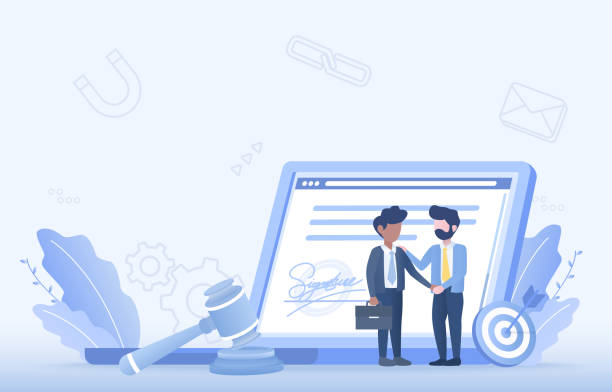
One of the most important aspects after personal website design is ensuring its visibility in search engines like Google.
This is where Search Engine Optimization (SEO) comes into play.
SEO is a set of techniques and strategies aimed at improving your website’s ranking in search results.
The first step is keyword research.
You need to find words that your target audience searches for to find content related to your field on the internet.
Then naturally incorporate these keywords into your titles, meta descriptions, URLs, and of course, into the text of your content.
Overuse of keywords (Keyword Stuffing) not only doesn’t help your SEO but can also lead to your site being penalized by search engines.
In addition to keywords, content quality and relevance also play a vital role.
Google and other search engines aim to provide the best and most relevant results to their users.
Therefore, your content should be specialized, comprehensive, and useful.
Proper website structure, including logical navigation and the use of heading tags (H1, H2, H3), helps search engines better understand your content.
Site loading speed and responsiveness (correct display on mobile) are also important SEO factors.
Also, building quality links (backlinks) from other reputable sites to your site increases your website’s credibility and helps improve its SEO ranking.
Finally, SEO is an ongoing process and requires continuous updating and monitoring to ensure that your personal website remains at the top of search results.
Personal Website Security and Maintenance: Ensuring Stability and Performance
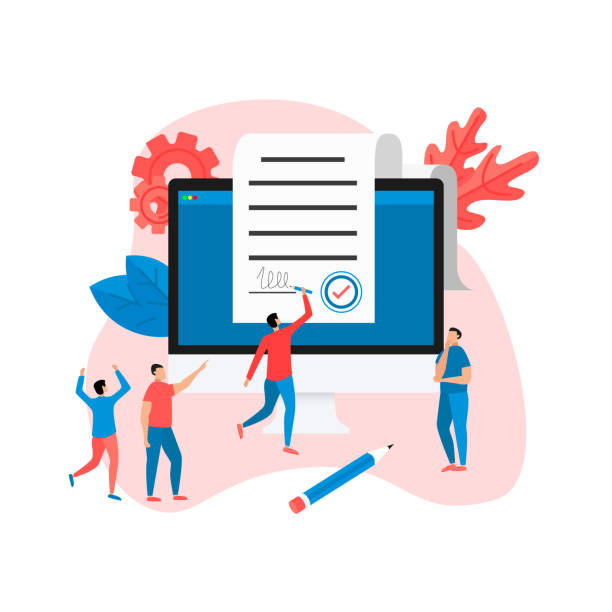
One of the often-overlooked but vital aspects of personal website design is its security and regular maintenance.
In a digital world full of cyber threats, protecting your website from hacker attacks, malware, and viruses is of paramount importance.
The first step in maintaining security is to use an SSL (Secure Sockets Layer) certificate, which encrypts the communication between the user’s browser and your website server.
This is important not only for user privacy but also helps your site’s SEO, as search engines give positive points to websites with SSL.
Regular updates of the platform (such as WordPress), plugins, and themes used are crucial.
Many cyberattacks occur through vulnerabilities in older software versions.
Therefore, always install the latest versions.
Using strong and unique passwords for your website’s admin panel and hosting service is also essential.
Installing reputable security plugins and regularly backing up all website data are other preventive measures that can prevent data loss in case of problems.
Personal Website Security Checklist
| Security Measure | Description | Importance |
|---|---|---|
| Install SSL Certificate | Encrypts information between user and server (HTTPS) | High (Security & SEO) |
| Regularly Update CMS and Plugins | Covers known security vulnerabilities | Very High (Prevention of Attacks) |
| Use Strong Passwords | Prevents unauthorized access to the admin panel | Very High (First Line of Defense) |
| Regular Backups | Ability to restore data in case of problems | Very High (Disaster Recovery) |
In addition to security, maintenance also includes periodic checking for broken links, optimizing images for better loading speed, and ensuring all website functionalities are working correctly.
These routine maintenances ensure that your personal website is always available to users with the best performance and without flaws.
A secure and updated website increases your credibility and provides a positive experience for visitors.
Ways to Monetize and Profit from a Personal Website
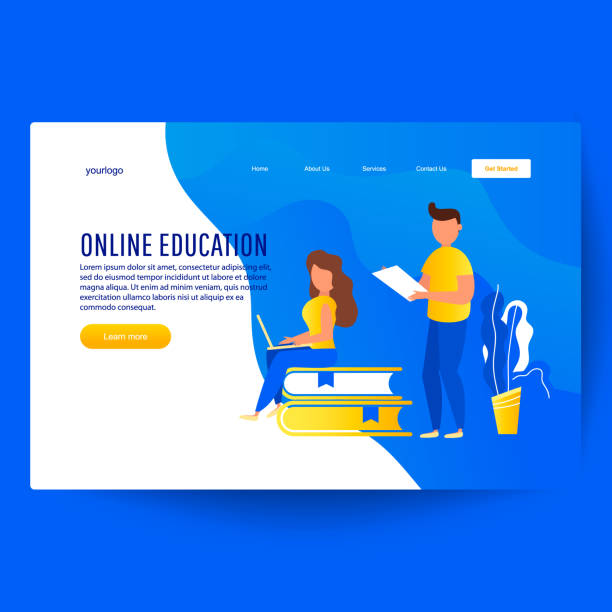
One of the thought-provoking questions for many individuals after personal website design is how to earn money from it.
While the primary goal of a personal website may be to showcase a portfolio or share knowledge, there are numerous ways to generate financial benefit from it.
One of the most common methods is advertising.
You can use platforms like Google AdSense to display ads relevant to your site’s content and earn revenue from clicks or impressions.
However, you should be careful that excessive advertising does not disrupt the user experience.
Selling your own products or services is another way to earn income.
If you are an artist, you can sell your works.
If you are a consultant or coach, you can offer your services.
Creating a small online store alongside your personal website, using plugins like WooCommerce for WordPress, is relatively easy.
Affiliate Marketing is also another option.
In this method, you promote others’ products or services on your site and receive a commission for each successful sale or referral.
This method is particularly suitable for bloggers and content creators.
Offering premium content or paid memberships is another method where users pay a fee to access exclusive content, training courses, or specialized forums.
This approach can be very beneficial for professionals who have valuable specialized knowledge to offer.
Finally, sponsorship and donations can also be revenue streams for personal websites, especially if your content is very popular and widely accessed.
It is important to carefully choose monetization methods that align with your website’s goals and audience and do not harm your credibility.
Smart personal website design can be a sustainable channel for your income.
Are you tired of losing customers due to poor e-commerce website design? With Rasaweb, solve this problem permanently!
✅ Increase sales and conversion rate of visitors to customers
✅ Smooth and attractive user experience for your customers⚡ Get a free consultation
Common Mistakes in Personal Website Design and How to Avoid Them

In the process of personal website design, there are some common mistakes that can harm your efforts and expenses.
Understanding these mistakes and knowing how to avoid them is crucial for your website’s success.
One of the biggest mistakes is ignoring the main goal of the website.
Without clear and specific goals, your website might turn into a directionless platform that neither satisfies you nor attracts an audience.
Before you start, know exactly what you want to achieve and how you want to achieve it.
Another common mistake is over-complexity in design.
Some people think that the more flashy their website is, the better.
But in reality, simplicity and efficiency often outweigh complexity.
Complex navigation, long loading times, and the use of unnecessary elements disrupt the user experience.
A simple, clean, and user-friendly website is always preferred.
Lack of mobile optimization is also a big mistake.
Today, most users connect to the internet via mobile phones; therefore, if your website does not display correctly on mobile devices, you will lose a large portion of your audience.
Ensuring responsive design is essential.
Ignoring SEO can also hide your website in search results.
Even if you have great content, if search engines can’t find it, your efforts will be futile.
Finally, lack of regular content updates and security issues can also harm your website’s credibility and performance.
Your website is a living entity that requires constant attention and maintenance.
By avoiding these mistakes and following expert guidance, you can have a successful and sustainable personal website.
The Future of Personal Websites and New Trends

The world of personal website design is constantly evolving, and its form and appearance change with the emergence of new technologies and trends.
Awareness of these trends is important for maintaining the dynamism and relevance of your website in the future.
One of the most important future trends is a greater focus on personalization and artificial intelligence.
Websites will increasingly be able to tailor the user experience based on each visitor’s behavior and preferences.
This could include displaying relevant content, personalized product recommendations, and even adaptive navigation.
Augmented Reality (AR) and Virtual Reality (VR) also have great potential to revolutionize the web experience, especially in personal websites that focus on showcasing creativity and projects.
Imagine an architect being able to display their projects in an AR environment or an artist presenting a virtual gallery of their works.
Voice search is also growing rapidly, and websites need to be optimized to respond to this type of search.
This means that your content should be written in a more natural and conversational language to align with users’ voice queries.
Other trends include a greater emphasis on performance and loading speed (given the advancement of PWA – Progressive Web Apps technology), as well as more advanced cybersecurity.
Given the increase in cyberattacks, websites must employ stronger security protocols.
Video and interactive content will also continue to grow, and personal websites should find creative ways to incorporate these formats.
Ultimately, success in building a future-proof personal website requires continuous awareness and adaptation to these news and technological trends so that you can always stay at the forefront and fully leverage your platform’s potential.
Frequently Asked Questions
| Question | Answer |
|---|---|
| 1. What is a personal website? | A website created by an individual to showcase personal information, resume, portfolio, interests, or blog. |
| 2. Why is having a personal website important? | It allows you to have a professional online presence, showcase your skills and experiences, connect with others, and manage your digital identity. |
| 3. What content should I include on my personal website? | Typically includes an About Me page, resume, portfolio, contact information, blog (optional), and gallery (if needed). |
| 4. How do I choose a suitable domain name for my personal website? | It is best to use your first and last name (e.g., yourname.com). Choose a name that is short, memorable, and relevant to your identity. |
| 5. Do I need coding knowledge to design a personal website? | No, using Content Management Systems (CMS) like WordPress or Website Builders like Wix or Squarespace, you can build your website without coding. |
| 6. What is hosting, and what type of hosting is suitable for a personal website? | Hosting is the space where your website files are stored to be accessible to the public. For a personal website, Shared Hosting is usually sufficient and cost-effective. |
| 7. What is the importance of Responsive Design for a personal website? | Responsive Design ensures that your website displays correctly and with an appropriate appearance on all devices (computer, tablet, mobile), which is crucial for an excellent user experience. |
| 8. How can I optimize my personal website for search engines (SEO)? | By using relevant keywords, producing high-quality content, optimizing images, having a proper URL structure, and acquiring backlinks, you can improve your website’s SEO. |
| 9. How do I keep my personal website updated? | Regularly add new content (such as blog posts or new portfolio items), keep contact information up-to-date, and ensure that the software and plugins used are current. |
| 10. Can I use my personal website to earn income? | Yes, you can earn income by selling your products or services, advertising, affiliate marketing, or providing specialized consultations, depending on your content type and goal. |
And other services of Rasaweb Advertising Agency in the field of advertising
How to use advertorials to introduce after-sales services
Creating advertorials with customer experience-based content
The role of graphic design in advertorial attractiveness
How to use advertorials to advertise imported medical equipment
Leveraging high-ranking classified websites for advertorials
And over hundreds of other services in the field of internet advertising, advertising consultation, and organizational solutions
Internet Advertising | Advertising Strategy | Advertorial
🚀 Rasaweb Afarin: Your digital partner for growth and visibility in the online world. From dedicated website design to SEO optimization, we provide comprehensive solutions for your business success.
📍 Tehran, Mirdamad Street, next to Bank Markazi, Kazeroon Jonubi Alley, Ramin Alley, No. 6

